Having a fabulous SOOC, or Straight Out Of the Camera shot, can be a game changer when it comes to editing and workflow. It’s no secret that you want a gorgeous SOOC because it’s easier. But we often forget the benefits beyond the ease that a gorgeous SOOC brings.
*This post contains affiliate links. Thank you in advance for you supporting Click it Up a Notch.
For one, having a near-perfect SOOC can instantly effect the quality of your photo. Have you ever accidentally underexposed, then fixed the image post-process and noticed a large amount of grain, even though you weren’t shooting at a high ISO? An underexposed or slightly out-of-focus image can cause a lot of grain or noise in an image. Here are my Top 5 Tips for Getting a Beautiful SOOC, and why you should want to.
-
No.01Get a proper exposure.
Like mentioned above, an underexposed image could realistically ruin a photo from added grain that is hard to remove in post process. Getting a proper exposure also has a wonderful effect on editing time. Manually tweaking the exposure of every single image could take up an abundance of unnecessary editing time. Try your hardest to achieve a perfect exposure in camera. But when it doubt, overexpose slightly. It is always better to overexpose than underexpose.
I fixed the image in Lightroom by boosting the exposure slider, but if you zoom in on the properly exposed image and the one I fixed, you can see there is still grain in the fixed image.
-
No.02Set your white balance.
There are countless ways to achieve a proper white balance in camera. You can use settings within your camera such as auto white balance, cloudy, tungsten, etc. If your camera allows, you can set your white balance manually with kelvin. And there is an endless supply of products to help achieve a proper white balance. A few examples would be a gray card or an Expodisc. Different photographers swear by different techniques and products. The key is finding what works for you.
Getting a proper white balance in camera saves as much time as a proper exposure would. Fixing the white balance image by image would be time consuming and frustrating. Getting it right in camera is the ticket. Don’t forget to check it when changing settings or if your light source changes (darn you, you pesky clouds).’
-
No.03Remove distractions before taking the shot.
I love Photoshop as much as the next person, but wasting time on removing a sock from 20 images is crazy! Remove as many distracting items in the frame as you can. Heres a tip: if your camera has liveview, use it! Does anything pop out? If you don’t have liveview, just take the shot and see if anything grabs your attention (that isn’t supposed).
It’s also important to get your lines and horizons straight in camera so you don’t have to straighten all of your photos afterwards. You could also be losing valuable pieces to your composition if you are straightening after the fact.
-
No.04Nail focus.
Like I mentioned previously, a slightly out-of-focus image can do more damage to your image than you realize. Often times, out-of-focus images will seem grainy because your subject isn’t tack sharp. If you are having trouble nailing a perfect focus often, try changing up your focusing method. There are many different settings, methods, and ways to achieve a tack sharp image. A few different methods include BBF, toggling and focusing and recomposing. Check out this great tutorial on tips to achieve sharp focus.
-
No.05Shoot RAW.
We all make mistakes. This ensures that you have a better chance of saving an image when you don’t get that perfect SOOC. Maybe you took the indoor shot when your ISO was still at 100 from an outdoor image. RAW leaves way more wiggle room when it comes to saving an image than a JPG would. You can remove way more from both underexposed and overexposed images when shooting in RAW.


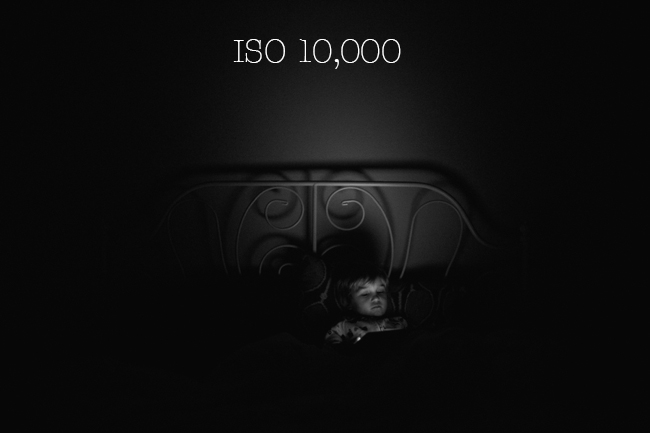

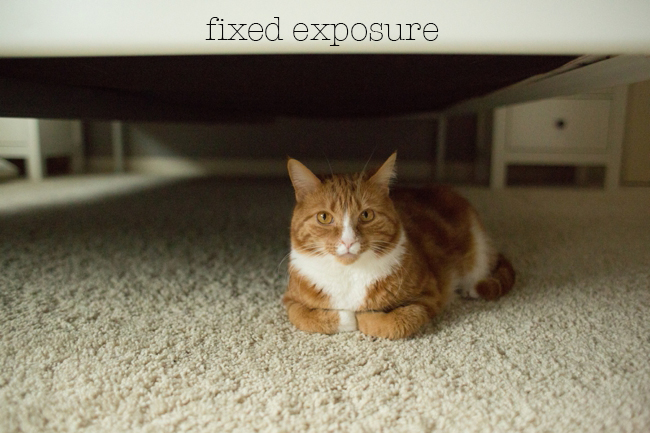
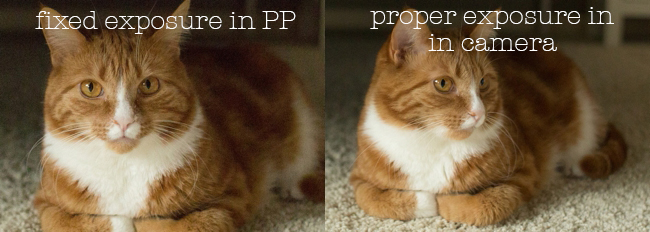

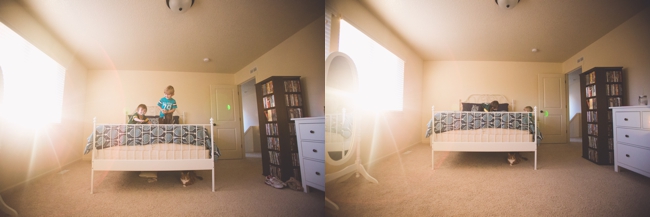

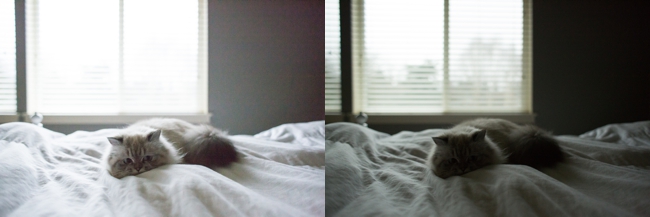






Grain can sometimes be charming in an image.
Thanks for the article. A great reminder to get it right in camera and that LR can’t fix all the grain. And, as I was reading through this I thought that bedroom looked familiar (wow – that sounded creepy!). I’ve seen it in one of Brit’s great breakouts on Clickin Moms. Such an inspiring photographer for us all to learn from!
When done with purpose, grain can add to an image, like the kind seen in film photos. It can keep a photo from looking too digital and too coldly perfect. Noise it’s what is undesirable and noise is different from grain, at least in my head. Sometimes I shoot higher ISO than necessary just because I want a pleasing grain. I noticed more noise, versus grain, in my D90 compared to my D800, presumably because my D90 couldn’t handle lower light situations as well as my D800 could. But I do agree that getting the exposure the way you want it the first time will require less time before the computer. My latest images went straight from my camera to print and digital sharing with no more adjusting than some cropping here and there.
I am pretty sure it is better to under expose than to over expose. I think there are several mistakes in this article
I agree with the writer. I believe it is better to over expose as well :)
I am another Colleen, and I agree with the O.P Colleen! :) Always better to underexpose. That is what I was always taught in all of my photo classes in school and college. Underexposed images are easier to fix in post-processing because their files retain more of the data…just my preference and opinion.
Thanks for the great article Brittany. Removing distractions is one thing I always seem to forget and is a big time waster later. It’s good to have these little reminders.
I’m dying to learn how to nail that WB thing!
I find that a little under exposure in bright daylight then bring up shadows just a little bit in post. Film days we would expose for highlights and develop for shadows. Compensation, can’t shoot without it.